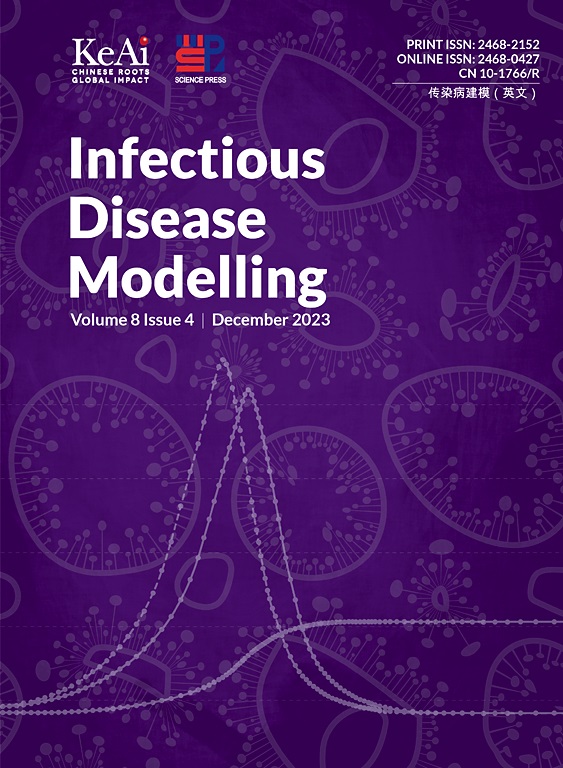2023 年 10 月 1 日至 2024 年 2 月 5 日中国流感预测:基于人口迁移的传播动态模型
IF 8.8
3区 医学
Q1 Medicine
引用次数: 0
摘要
导言自 2023 年 11 月以来,流感一直位居中国传染病报告病例的首位,北方和南方省份的疫情均超过了 2022 年同期的水平。这对人们的健康构成了严重威胁。因此,中短期流感预测有利于疫情评估,并可减轻疾病负担。方法采用考虑人口迁移的传播动力学模型,包括易感者-暴露者-感染者-无症状者-康复者(SEIAR),预测春节旅游高峰前的流感动态。结果疫情总体呈下降趋势,高峰期预计出现在2023年第47周至2024年第1周。甲型 H3N2 流感病例数高于乙型流感病例数,南方省份流感形势较北方省份更为严峻。随着春节旅游高峰的临近。因此,应提倡非药物干预(NPIs)、流感疫苗接种和其他措施,以减少医疗和公共卫生负担。本文章由计算机程序翻译,如有差异,请以英文原文为准。
Predicting influenza in China from October 1, 2023, to February 5, 2024: A transmission dynamics model based on population migration
Introduction
Since November 2023, influenza has ranked first in reported cases of infectious diseases in China, with the outbreak in both northern and southern provinces exceeding the levels observed during the same period in 2022. This poses a serious health risk to the population. Therefore, short to medium-term influenza predictions are beneficial for epidemic assessment and can reduce the disease burden.
Methods
A transmission dynamics model considering population migration, encompassing susceptible-exposed-infectious-asymptomatic-recovered (SEIAR) was used to predict the dynamics of influenza before the Spring Festival travel rush.
Results
The overall epidemic shows a declining trend, with the peak expected to occur from week 47 in 2023 to week 1 in 2024. The number of cases of A (H3N2) is greater than that of influenza B, and the influenza situation is more severe in the southern provinces compared to the northern ones.
Conclusion
Our method is applicable for short-term and medium-term influenza predictions. As the spring festival travel rush approaches. Therefore, it is advisable to advocate for nonpharmaceutical interventions (NPIs), influenza vaccination, and other measures to reduce healthcare and public health burden.
求助全文
通过发布文献求助,成功后即可免费获取论文全文。
去求助
来源期刊

Infectious Disease Modelling
Mathematics-Applied Mathematics
CiteScore
17.00
自引率
3.40%
发文量
73
审稿时长
17 weeks
期刊介绍:
Infectious Disease Modelling is an open access journal that undergoes peer-review. Its main objective is to facilitate research that combines mathematical modelling, retrieval and analysis of infection disease data, and public health decision support. The journal actively encourages original research that improves this interface, as well as review articles that highlight innovative methodologies relevant to data collection, informatics, and policy making in the field of public health.
 求助内容:
求助内容: 应助结果提醒方式:
应助结果提醒方式:


